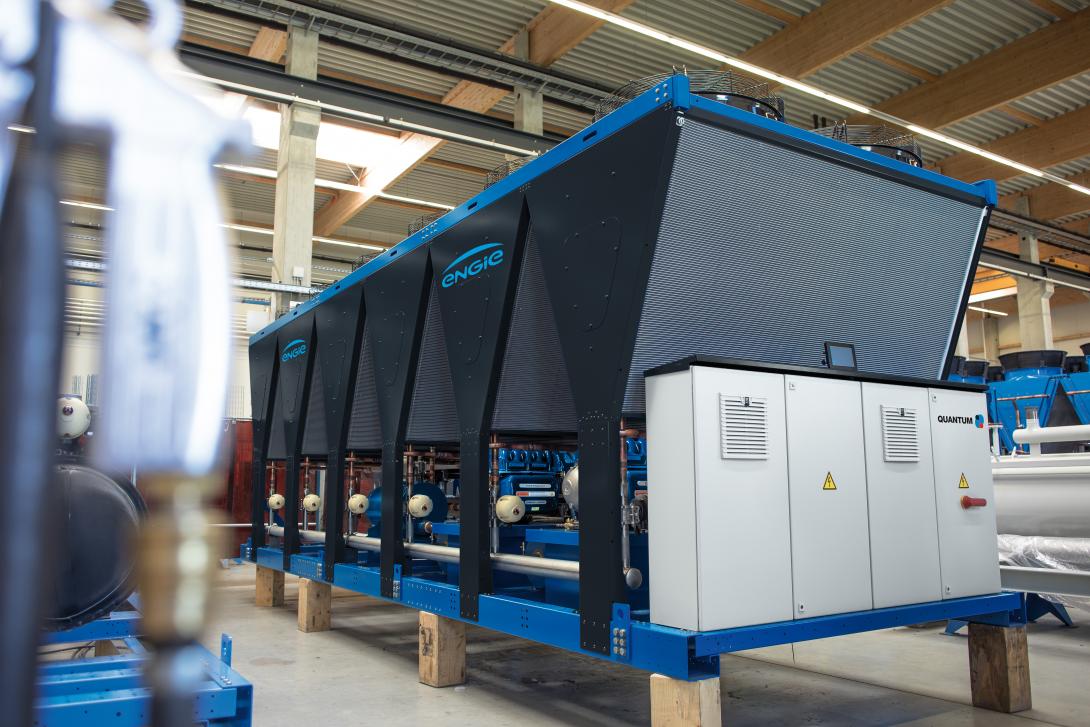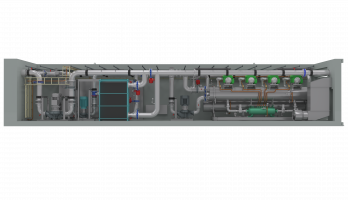
F-gas Regulation: An important step towards climate-friendly refrigeration
The F-gas Regulation issued by the European Union confronts the refrigeration industry with major challenges. Its mission: to move away from fluorinated greenhouse gases (F-gases) and towards climate-friendly refrigeration. In this article you will learn more about the legal regulation and about future-proof refrigeration solutions.
What is the F-gas Regulation?
EU Regulation No 517/2014 of the European Parliament and of the Council regulates the use of fluorinated greenhouse gases in Europe. The law on F-gases came into force on 16 April 2014 and is highly relevant to the refrigeration industry. That is because many refrigerants are based on hydrofluorocarbons (HFC), which are classified as F-gases. The regulation is designed to reduce the use of F-gases over several stages. By 2030, the quantities available on the market should be 79 percent lower than in 2015. And not without reason: F-gases boost the greenhouse effect and contribute to climate change. Legal reduction is thus an important building block for the climate targets of the European Union.
What are the contents of the F-gas Regulation?
As F-gases are restricted incrementally, the industry will have time to switch. The legal reduction specifications follow a “phase-down” process:
- By 2020: Sales volume reduced to 63 percent of 2015 levels
- By 2025: Reduction to 31 percent of 2015 levels
- By 2030: Reduction to 21 percent of 2015 levels
For the refrigeration industry, that means that the available quantities of many F-gas-based refrigerants will be removed from the market step by step. There are also regulations on the sale and use of chillers, as well as certification, disposal and labelling duties. From January 2020, for example, it will be prohibited to sell stationary chillers that use a refrigerant with a GWP value above 2,500. From 2020, refrigerants with a GWP value above 2,500 will also be subject to maximum fill levels. The global warming potential (GWP) specifies how strongly a substance affects global warming as compared to the natural greenhouse gas CO2.
The F-gas Regulation in practice
Procuring refrigerants is becoming increasingly difficult. Currently demand for HFC-based refrigerants is still high, but the available amounts are getting smaller. “In our day-to-day business we have noticed that it is becoming ever more difficult to procure specific refrigerants such as R-134a,” says Jörn Stiegelmeier, head of technology and development at ENGIE Refrigeration. “Prices and delivery capacities are changing every day.”
Refrigerants with high GWP values are becoming ever more expensive. The price for refrigerant R-134a, for example, increased 100 percent between January 2017 and April 2018. In February 2019, it was eight times as expensive as in early 2017. This is because of the quota rule in the F-gas Regulation. All consumers are competing for dwindling quantities, which is driving prices up. This is an advantage for the climate, as R-134a and other refrigerants become increasingly unattractive and solutions with a low greenhouse potential become more relevant.
F-gases and refrigeration technology: Climate-friendly alternatives for the future
We at ENGIE Refrigeration provide sustainable answers to the F-gas Regulation. We support our customers with alternative refrigeration solutions. Usually it is not necessary to replace the refrigeration system in use. Our QUANTUM chillers can be converted to the climate-friendly refrigerant R-513A, for example. It has a GWP value of just 631, but the same safety class as the conventional R-134a. It also provides the same refrigeration capacity and a refrigeration efficiency of 98 percent. In some cases, R-1234ze can be a suitable alternative refrigerant. With a GWP value of 7, the refrigerant is not subject to the provisions of the F-gas Regulation and offers full refrigeration efficiency, a refrigeration capacity of 75 percent, and is classified as safety class A2L.
Recommendations for converting
Anyone who is uncertain about the technical measures required by the F-gas Regulation can get advice from the refrigeration experts at ENGIE Refrigeration. We determine whether existing or planned chillers are affected by the climate protection law. We also determine whether devices need to be converted or replaced with climate-friendly versions. For new customers, we recommend our QUANTUM Air chillers, which are available from June 2019. These devices incorporate the flexibility to use R-134a, R-513A or R-1234ze in their very design.










